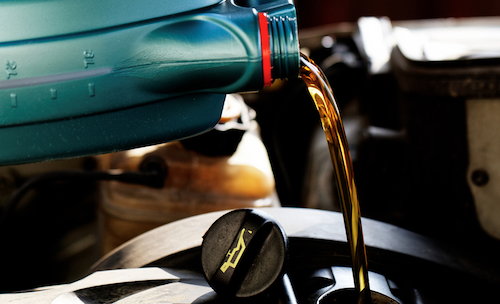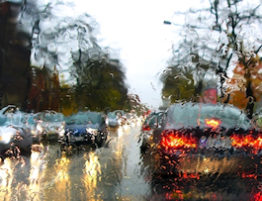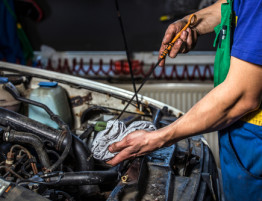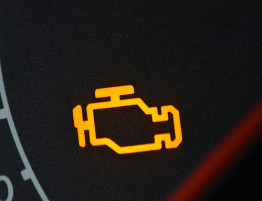
Regular vehicle maintenance is about as important to your livelihood as it is to your car. You never know when those neglected tires could hydroplane during a light drizzle, or when those old brake pads just can’t slow your car in time to avoid a collision.
The maintenance schedule for your vehicle is more than just a guideline to be followed when it’s convenient. It just might keep your car in good enough shape to prevent the unexpected from becoming disastrous.
Here are a few safety checkpoints to run through to keep your car in its best possible condition.
Change Your Tires and Keep Them Filled
Tread is the grooved part of your tires that touches the road. Rub your palm along the tread of each tire. How smooth is it? Is there any tread at all? If not, it’s definitely time to replace them before you slide off the road. Another good measure is to place a penny in one of the grooves. If you can see all of Abe’s head and more, that’s another sign you should replace them.
Driving with low tread makes your car more likely to go in directions you don’t want. Imagine constantly driving on ice, except instead of the road being slippery, your tires are. When it’s raining low tread can make your car easily hydroplane and skid during high-speed turns. You don’t want to end up running into a railing, or worse, so check your tread often!
Another thing to consider with tires is the air pressure. Keep a tire gauge in your glove compartment and check your air pressure each month. Most modern cars have built-in sensors to detect air pressure automatically and will tell you when pressure is low, but having a backup method is a good idea. It also wouldn’t hurt to take your car into your local auto shop every 7,000 miles to see if your tires need alignment or rotation.
Check and Change Your Fluids
Every 3,000 – 5,000 miles, make it a point to get your oil changed and fluids checked. The fluids include transmission, coolant/antifreeze, power steering, brake, and wiper fluid. It’s best to knock all these out at once when you’ve schedule maintenance. But, you can replace all of these fluids on your own—you just have to know where to look on your car and what kind of each fluid it needs.
If you’re hands-on, but not that hands-on, you can check your fluids, and take it into a shop when something needs to be topped off or replaced. For oil, using the dipstick to check the oil level is pretty much the same process on all cars. Just make sure the car is off first and that the oil is at the proper level.
For transmission fluid, the process varies, but you’ll want to make sure the car is running. If the fluid is low at all, you have a problem, as transmission fluid should never be low. This fluid only needs to be replaced every 50,000–100,000 miles.
Coolant, or antifreeze, is located in the radiator. Make sure the car is off and everything under the hood is cool before taking the cap off the radiator and looking inside. It’s hot! If the coolant or antifreeze is low, take it into a shop to get more. You’ll need to use the same type of coolant already in the car. This can be checked twice a year before summer and winter, and replaced each year.
Power steering, brake, and wiper fluid are more straightforward and can all be checked visually if you know where to look. If your steering wheel sounds creaky, your brakes aren’t working as well as they used to, or nothing is squirting out when you try to clean your windshield, you should check these fluids.
The safety concerns associated with most of these fluids speak for themselves. The oil, however, can present other concerns since going too long without a change can have lasting damage on your engine. An engine failure can cause you to be expectedly stranded in the middle of traffic or on the side of the road. Worst-case scenario, you could be hundreds of miles away from a shop, so be especially sure to check your fluids if you’re going on a trip!
Lights, Wipers, Filter, and Battery
These are less concerning matters of safety, but important nonetheless. Your lights can be checked by turning all of them on and walking around the car to see if any need replacement. Have a friend tell you if your brake lights are working correctly. If one is out, you can try replacing the fuse. If that doesn’t work, you can take your car into a shop so that you get the right light. A dim light can make it harder to see things at night, which is a safety concern. An out light makes it impossible for other drivers to anticipate your movements, which can lead to accidents.
Wiper blades are easy to check. If you’re driving in a storm, and your wipers are simply smearing the rain around, you should replace them. Storms can be dangerous enough without the additional hazard of little-to-no visibility.
Find where your car’s air filter is and pull it out. If you can’t see through it in the light, the time has come to replace it. Air filters make the air you breathe in your car cleaner and also improve your car’s performance.
One last thing you can do for your car is to check the battery cables and make sure they are not corroded or disconnected in any way. Make sure the car if off before doing this. Checking this will help prevent an electrical failure.
When You Need a Shop …
If you’re too busy to check and replace all these things yourself, like most people, you can contact or schedule an appointment with Dillon’s Automotive and let us take care of the rest! We can run every one of the checks above and more. So get in touch today!



